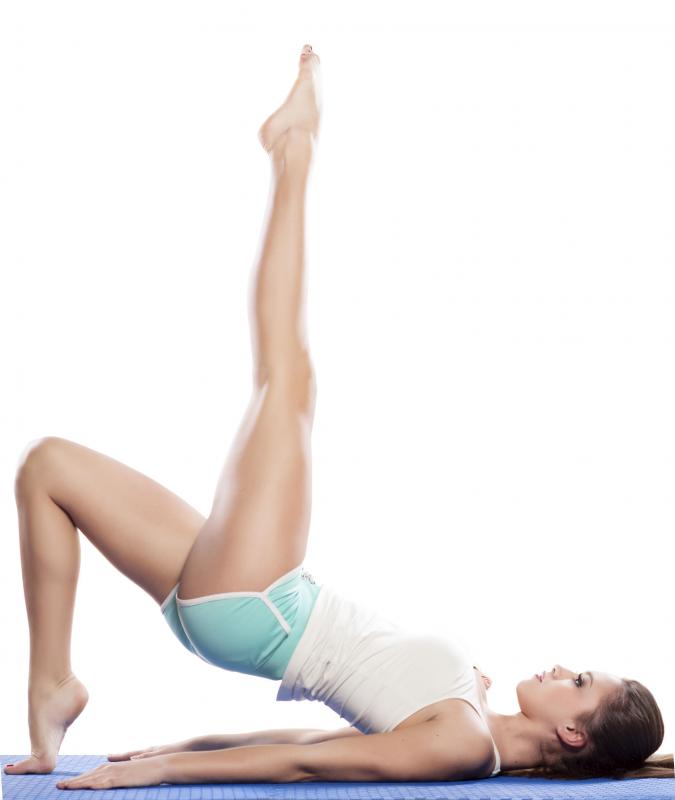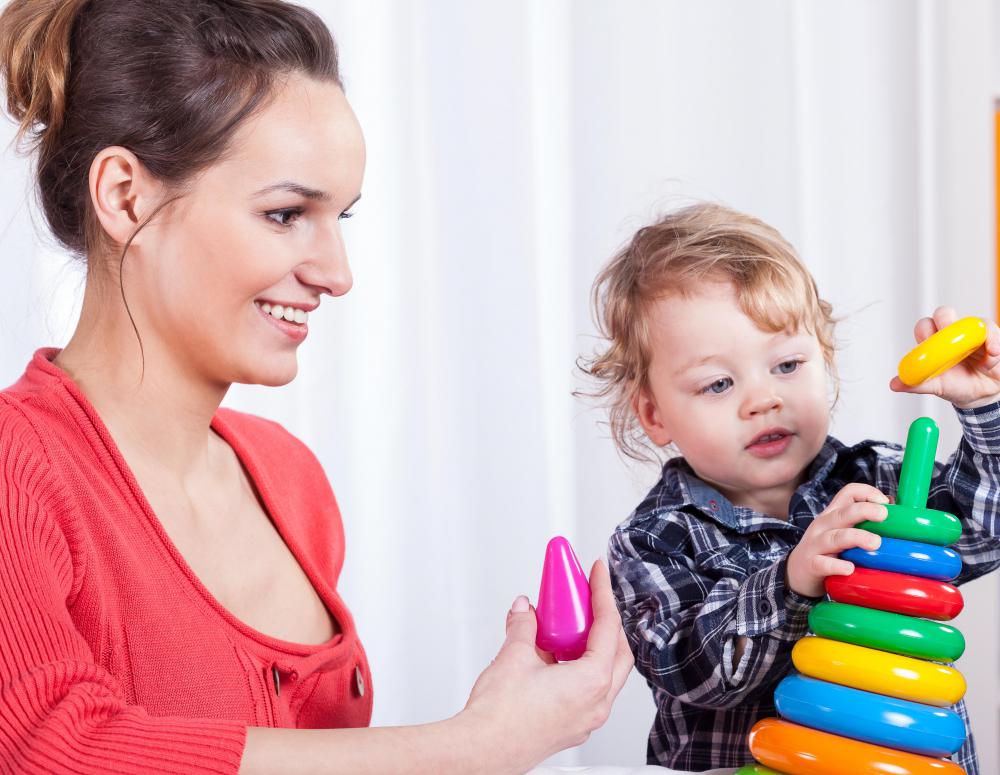At TheHealthBoard, we're committed to delivering accurate, trustworthy information. Our expert-authored content is rigorously fact-checked and sourced from credible authorities. Discover how we uphold the highest standards in providing you with reliable knowledge.
What Are Non-Locomotor Skills?
Non-locomotor skills include stretching, bending, twisting, and hand clapping. They consist of any motion of the body that doesn’t result in traveling from one place to another. Turning, foot tapping, and winking are examples as well. Like other types of motor skills such as walking and running, non-locomotor skills are developed beginning in infancy and advance through childhood. Many early education curricula include lessons on these skills; 21st century schools are recognizing the importance of helping children acquire those that are typical of each age group.
Swaying, curling, standing and getting into a particular posture are considered non-locomotor skills. One of the most important of these skills is stretching, not only for athletes, but for anyone engaged in activities that involve repetitive movement. Stretching prepares the muscles for activity and helps them wind down afterward. Injuries occur in every sport less often when the proper stretching exercises are performed before and after playing. In addition to protecting muscle, stretch exercises have health benefits including better blood circulation and flexibility.

Children between seven and eight years old can learn to pedal a bicycle, which is not a locomotor skill. A one month old can lift his or her head and follow objects, and after the second month can keep the head up for short periods of time while sitting up. These skills in children begin to develop during infancy. Various types of motor skills, therefore, can be observed and taught early on. After 10 months toddlers can squat and stoop, after 13 months it is typically possible to roll a ball, and after 18 months, pushing and pulling toys is possible.

Three and four year olds can often pedal and steer a tricycle. School curricula often correlate non-locomotor skills activities to the appropriate grades. This way, the proper age groups receive adequate instruction. The skills are taught through various activities which are sometimes perceived as fun for kids, but which have various health benefits and aid in their development. Each lesson can focus on a different skill or the movement of a particular body part.

Developing non-locomotor skills is a multi-step process that occurs throughout childhood. These skills, while not directly associated with traveling, include complex activities such as riding a bicycle and even hula hooping. Coordination is needed to master these skills. Even though certain skills considered typical for particular age groups, some children develop different skills at faster or slower rates than others.
How To Develop Non-locomotor Skills

Clearly, it's essential to build non-locomotor skills from the earliest weeks of a child's life, but how do we get them to engage in exercise? Fortunately, most children and babies are eager to expand their range of mobility. If you provide them with a goal or activity that incorporates the desired motion, they'll pick it up quickly.
Knowing that parents will instinctually help babies develop these skills is also helpful. People make faces at infants and dangle objects in their line of sight almost without thinking about it. This elicits a reaction, such as reaching out or turning their head.
These exercises are great practice for babies to learn how to track objects without moving or focusing on someone's face. However, as the child gets older, this process becomes more involved and intentional. Toddlers need to be given specific tasks to develop these skills. Below are a few games and goals that help kids learn non-locomotor skills.
Infants
Babies that can't support themselves have a limited range of motion. Here are a few ways they can practice.
- Hold up a toy or shiny object such as your keys and slowly move them around within their line of sight. As their eyes begin to follow it, move it just out of their sightline and back again. Eventually, they'll learn to turn their head to keep an eye on it.
- Get them a kick mat. One of the first things babies can do is swing their legs, so providing them with an object to reach for and aim at will help them move their legs precisely.
- Bicycling a baby's legs is an excellent exercise for many reasons, including stretching and strengthening. The gentle movement of the knee and hip joints will help keep them flexible.
Toddlers
Babies do eventually grow and learn to walk. But once they're on their feet, it's essential not to neglect non-locomotor skills in favor of the more exciting locomotive movements. Here are some non-locomotor activities for toddlers.
- Toddlers can practice manipulating their arms and legs by imitating animals. An adult can ask them to show them what bunny ears look like or how an elephant swings its trunk.
- While the child is sitting down, parents can give the child a stuffed animal or baby doll and ask the child to rock them to sleep. This will help them establish balance, bending at the waist and swaying.
- Each morning, parents can set a stretching routine while sitting or standing beside the bed. Practicing focusing on one group of muscles at a time will help the child learn limits like what feels good and what feels dangerous. Doing this in the morning is easy when the body stretches out naturally.
- Children are almost never too young to learn how to ride a bike. Riding a bike is an excellent way to practice non-locomotor skills because it's fun and builds strength and endurance.
Why Is Establishing Non-locomotor Skills Important?
Non-locomotor skills are the vital foundations of motion. Without mastering these basic skills, people can't learn the complex movements required to walk, run, or climb. In infants, one of the first signs of learning how to crawl starts with learning how to roll over. In order to roll over, they must first know how to lift their heads and twist at the waist.
It's also possible to observe the establishment of these skills in adults. When a person suffers an injury or illness restricting locomotor skills, rehabilitation is usually required to help that person re-learn the basics. Doctors, exercises, and special equipment help the patient learn how to bend at the knee, turn the head, or engage in other simple movements.
Non-locomotor Skills in Physical Education
Physical education will hopefully start in the home, but most people are usually introduced to it once they begin attending school. Most of the time, physical education will consist of sports, games, and other activities designed to help them work out plenty of energy. It's essential, however, that teachers don't overlook non-locomotor skills.
Physical educators can help students practice non-locomotor skills by teaching them how to hula-hoop, throw a baseball, or try some basic yoga. All of these skills can help them become more coordinated and balanced as they explore their abilities.
AS FEATURED ON:
AS FEATURED ON:














Discussion Comments
@Ana1234 - Well, he is supposedly developing hand-eye coordination by playing video games and there are some you can get that will encourage him to move and stretch his body as well.
My friend has one of those systems and her kids are adorable when they are playing on it. They jump all over the place and mime throwing things and so forth.
It's no substitute for real exercise, but better than nothing. And there have definitely been studies which show that even on ordinary games, kids can improve their reaction times and things like that.
@indigomoth - We have a six year old too and it's getting difficult to keep him developing his non-locomotor skills now, since he always seems to be glued to the TV or playing computer games.
We have to make sure he goes out for throwing sessions and bike riding (I didn't realize that was considered non-locomotor, but I guess it makes sense).
Hopefully as he gets older he'll appreciate it, but right now he acts as though it's just another chore to do.
It was really fun watching my baby nephew grow up and checking out the different things he could do at different ages. I still remember how excited and eager we all were to get him crawling, but how much trouble he would get into (or at least try to!) once he managed the art of it.
It's hard to keep yourself from trying to push them, but it's almost sad when they do manage a new skill because, once he walks he may never need you to carry him again.
He's six now and still passing through milestones. Not quite so many obvious ones now that they mostly seem to be educational, but it's still a joy to see him discover the world.
Post your comments